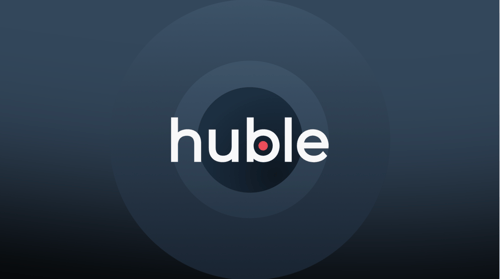In this blog, Matthew Creswick, Group Marketing Director at Huble Digital, explains why HubSpot is the best-in-class solution for website development and can help businesses to accelerate growth.
There are hundreds of content management systems to choose from when deciding what platform to build your website in. We use HubSpot, and help clients across the globe to do the same. Why? I love how it is integrated with all of our marketing and sales data, but it's also really awesome, easy and intuitive to use on a daily basis.
In this blog, I’m going to share with you six reasons as to why I think you should use HubSpot for your next website build...
1. What you see is what you get (WYSIWYG)
One the best things about using HubSpot to build a website is its WYSIWYG tool. The second thing is that I get to use the acronym WYSIWYG within another blog post 😍. With this tool, users can edit web pages and see what it will look like as if it were live and published.
Changes can be made directly to pages and updates take seconds, not minutes or hours. Any changes to pages can be scheduled – so no need to take pages offline at all – and requires no major coding or technical skills.
2. Personalisation at scale
HubSpot’s CMS is – according to HubSpot – “the first and only combined CMS and CRM that offers the ability to personalise the entire customer experience from first visit to every single interaction afterwards”. How good does that sound?
But how does HubSpot help achieve this?
-
Smart content
Using HubSpot’s smart content modules, page content (or entire web pages) can be personalised based on specific attributes, changing the website experience over time. For example, content on a page could be personalised for a certain contact based on their industry, lifecycle stage or persona - which is pretty cool! -
Forms, pop-up forms and CTAs
All of these conversion tools are built in to the HubSpot CMS – but they can also be personalised based on a lead’s previous interactions with them. Using progressive profiling, for example, businesses can show different form fields to already known leads, enabling them to get more information and build a contact’s profile over time.The same can be done with pop-up forms and CTAs. By turning a CTA into a smart CTA, leads can be shown content assets different to the ones they have downloaded already.
-
Live chat and chatbots
Perhaps most crucially, live chat and chat bots. Live chat is important because sometimes website visitors want to talk to an actual person. Sometimes they need help finding something on the website or finding out more about the business’ services. They don’t want to talk to a scary salesperson – they just want a nudge in the right direction. Live chat provides them with that option.Chatbots, on the other hand, help to preserve a business’ marketing and sales resource by answering the basic questions that website visitors frequently have. Chatbots can analyse queries to determine if human support is needed. These chatbots can also be personalised based on a website visitor’s previous interactions with the website. Also, just as some people want to talk to a human, some prefer talking to robots 🤖.
3. Connect your website to your marketing and sales
HubSpot’s CMS provides more than just website development; all of the tools can be connected to a business’ marketing and sales activities (providing it’s using the other HubSpot packages).
The biggest benefit of this is that it enables end-to-end reporting, in-depth analysis, visibility and consistency. It also enables marketing and sales teams to accurately track performance and attribute actual monetary values to specific activities or campaigns.
For example, if a business were to have the HubSpot CMS in place and the HubSpot customer relationship management (CRM) package, any leads generated via the website would be input into the CRM for the sales team to see. The sales team would also be able to see what web pages leads looked at before and after conversion, giving them more conversation options with leads.
4. Easy to use
HubSpot’s CMS is designed to be incredibly easy to use – but don’t mistake that for a lack of sophistication or depth.
As well as its standard features, it also provides tools and functions for web developers who want to create custom web pages and modules. The design manager, for example, allows for entire web pages (and their modules) to be altered without extensive coding or development knowledge – but, if you are a developer, you also have access to CSS styling and HTML.
This kind of capability not only makes HubSpot a suitable solution for businesses just getting started with website development, it also makes it easy for established businesses with developers on board to modify their website on the fly. The really interesting thing about the HubSpot CMS is the competition. HubSpot very much see this platform as in competition with tools like Adobe Experience Manager, but at a fraction of the cost.
5. Security and stability
When it comes to website management platforms / content management platforms – a key concern is their security and stability.
Take an open-source platform like WordPress for example. Although the platform enables its users to implement a wide range of third-party tools but can be very useful, there are no real quality assurance or security protocols in place to govern them.
Also, as many of the developers of these tools don’t offer on-going support, if issues are encountered they can take hours to resolve (on a good day!)
Lastly, if any of these plugins crash or have vulnerabilities, that instantly provides an attack point for cyber criminals. It also presents an issue if certain tools are reliant upon specific versions of other tools – in other words, if one tool is updated and no longer supports another, key services could be taken offline – and we don’t want that to happen to you.
HubSpot doesn’t have these issues. The software is proprietary, meaning that any changes to it are tested and managed by the HubSpot team internally. The end user doesn’t have to update anything as it’s all done in the background automatically for you. Furthermore, as updates are rolled out across the board, businesses can rest assured that their HubSpot website will continue to operate flawlessly.
6. Responsive design
Every page designed in HubSpot is responsive by design. This means that web pages will be optimised for the end user’s device, regardless of screen size.
Why is this important? Because people don’t just visit websites on desktops or laptops anymore. More and more of us are executing searches on the go using our mobile phones.
If a business has a website that isn’t optimised for mobile devices or tablets, that business can miss out on a massive chunk of traffic. Developing a responsive site is also quite complex and time-consuming, so the fact that HubSpot’s CMS does it out-of-the-box is pretty damn cool (and useful).
HubSpot isn’t just the best CMS or marketing automation solution on the market. It’s also the best solution available right now for business growth. Spanning marketing, sales and customer service, it has everything you need to manage your business’ website-based activities.









-3.png?width=500&height=320&name=Matt%20-%20imagery%20bank%20(8)-3.png)

